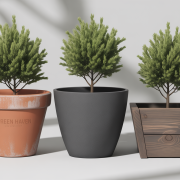A home is a long-term investment that you’ll want to last for many years. It’s crucial to have a strong and safe home that can withstand natural calamities and the usual wear and tear. A secure and sturdy place of residence will provide your household with peace of mind while within its walls.
Generally, the stronger the home, the less you have to pay for insurance premiums. Building material is one of the factors that determine insurance rates. The rationale is that the lower the risk, the lesser the insurance premium. Since a steel-framed house is more resistant to fire and harsh weather conditions, it will cost less to insure than a wood-framed one.
If you’re planning to build a home, it’s best to reach out to specialists for expert advice on building with longevity using the right materials and construction techniques. Doing this will ensure the safety of your family for many years to come.
Here are some guidelines for building a safe and strong home.
1. Ensure The Foundation Is Stable
For a home to last a lifetime, it should have a solid foundation with proper reinforcement. It’s highly recommended to reinforce foundation walls with steel and footings with poured concrete. This ensures your foundation is strong enough to bear the weight of the entire house, keep moisture out, insulate against the weather, and withstand an earthquake or hurricane.
If the foundation is built carelessly, the house might collapse on itself. Essentially, a house is as good as its foundation.
2. Install Quality Doors And Windows
To ensure you and your family are safe throughout the year, you should install high-quality, weather-resistant windows and doors. Steel, fiberglass, and vinyl are durable options for your door. On the other hand, wood clad with aluminum, fiberglass, vinyl, and metal are popular options for windows. Aside from weather resistance, your doors and windows should provide adequate insulation, making your home more energy-efficient.
You may also consider installing sensors in your doors and windows as part of your home’s security system. An alarm will be triggered when any of these entry points is breached.
3. Use Quality Materials
Using high-quality materials is essential to building a safe and strong home. Therefore, choose materials that are durable and require less maintenance.
Additionally, using premium materials will help improve your home’s value, energy efficiency, and overall insulation. Some of the best building materials include concrete, bricks, and steel framing.
4. Use Proper Insulation
Proper insulation is critical to a safe indoor environment. When your home is well-insulated, it can be comfortably warm during winter and pleasantly cool during summer. In addition, it helps minimize noise levels and inhibits the growth of mold and fungi.
There are a variety of insulation materials you can choose from, such as spray foam insulation, fiberglass batting, and spray foam insulation. All these materials are known to improve energy efficiency in your home and protect against the weather. With proper insulation, you can save on electricity costs.
5. Install Smoke And Fire Alarms

Handyman installing a smoke detector on the ceiling.
Installing proper smoke detectors and fire alarms in your home is also vital to your home’s protection. These devices can help detect dangerous gases in the air and trigger an alarm in case of fire in your home, giving you time to run for safety.
Also, along with the sensors, it’s advisable to install a carbon monoxide detector to protect your home against gas leaks.
6. Strong Walls
Your walls need to be secure and firmly attached to the foundation for your home to be safe and strong. If you want to accomplish this, use a long anchor bolt to secure the attachment between the walls and the foundation.
Strong walls are essential because they provide protection, security, and privacy to a home’s occupants.
7. Install A Sturdy Roof
A well-constructed roof is a necessary component of a solid and safe home. After all, the roof is your home’s primary barrier against the sun, rain, snow, and other elements. It’s more than a barrier, though. It also plays an important role in your home’s insulation and ventilation.
You have several options for your roofing material. Some types, such as slate and clay tile roofs, are more durable and naturally more expensive than others. Choosing a sturdier material may cost more initially but can be cost-effective in the long run because it allows you to save on repairs and premature replacement.
As for the design, a hip roof is highly preferred because it has four slopes, making it more durable and stable than the gable roof, which has only two slopes.
Conclusion
Apart from being a long-term investment, a safe and strong home protects your family from the elements and intruders. The various components, such as foundation, doors and windows, walls, and roof, need to be constructed with the correct specifications using quality materials to ensure a home that’s built to last.













[…] to shine onto objects behind the glass, making them visible. Although concrete is excellent for building safe and robust structures, excessively using it can leave the construction looking unappealing and […]
[…] want to inspect your home to ensure that there are no underlying issues that need to be resolved to ensure the strength and safety of your home. The last thing you need is a termite infestation or a caved-in roof out of the blue. Keep the […]